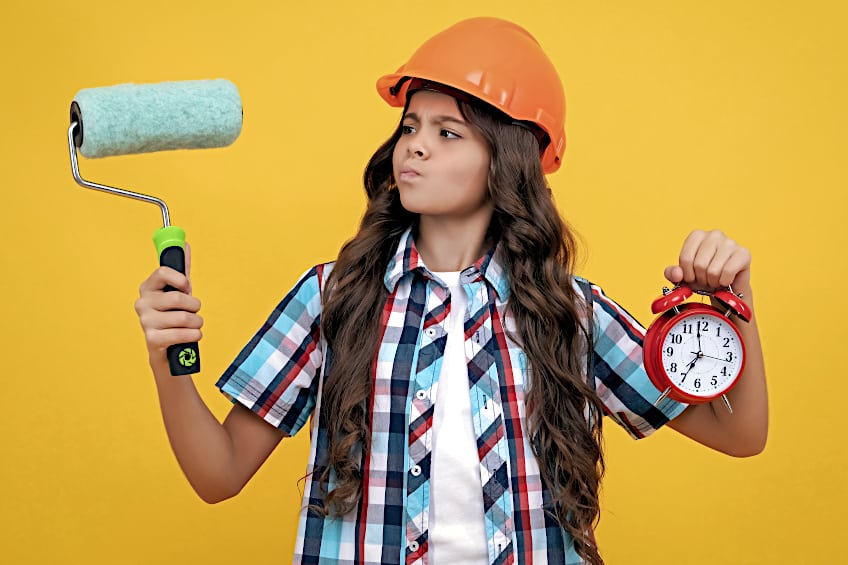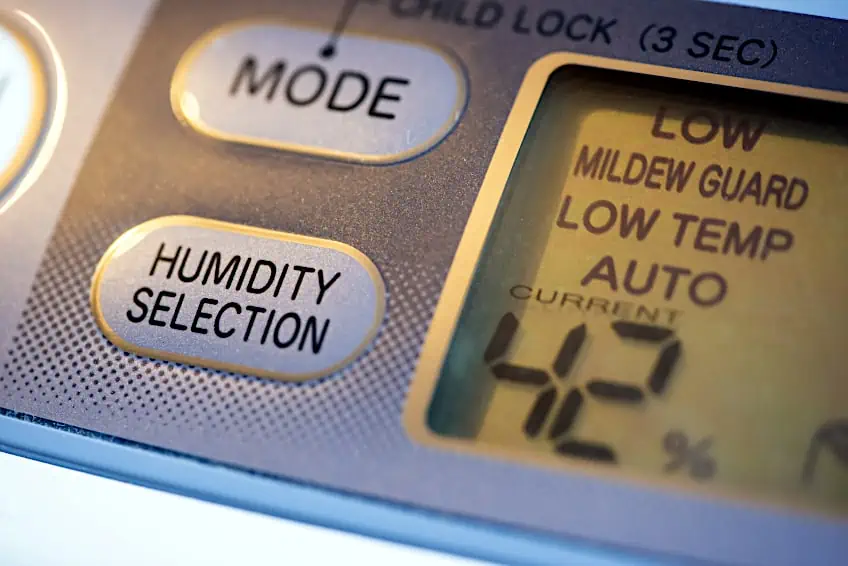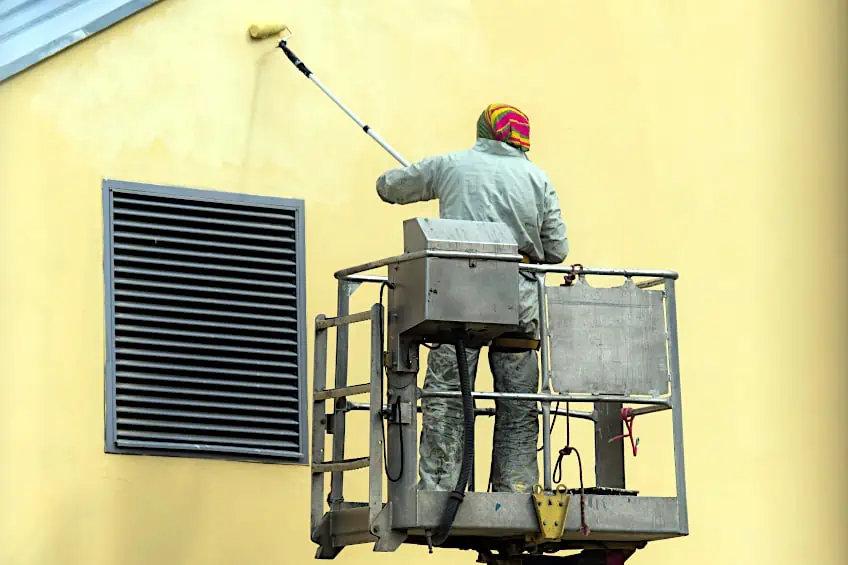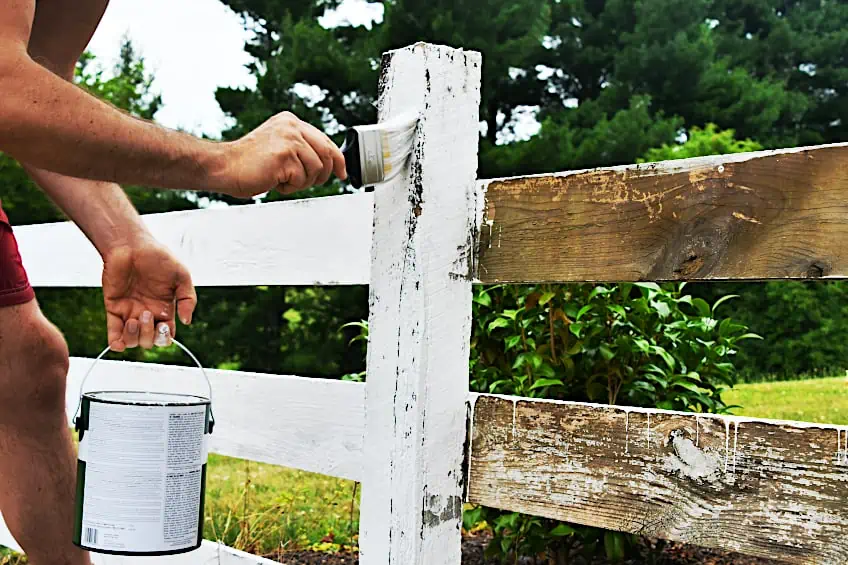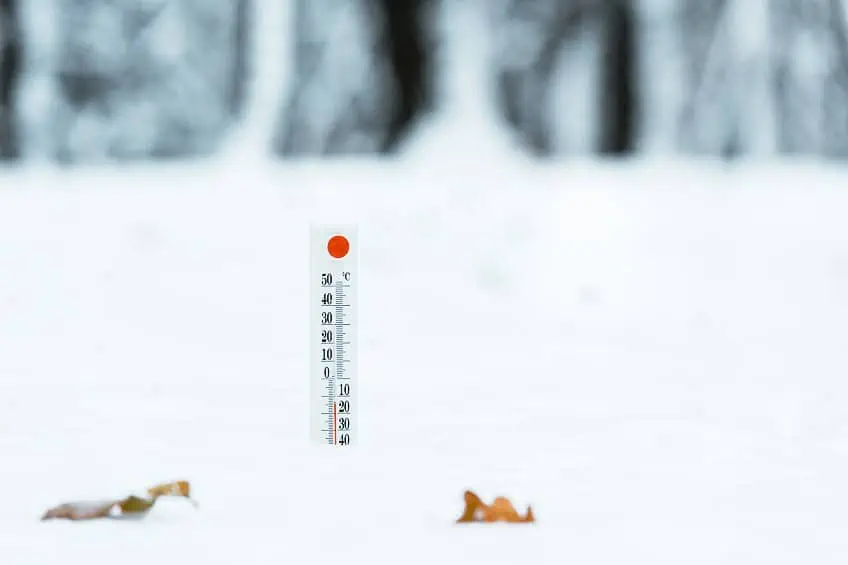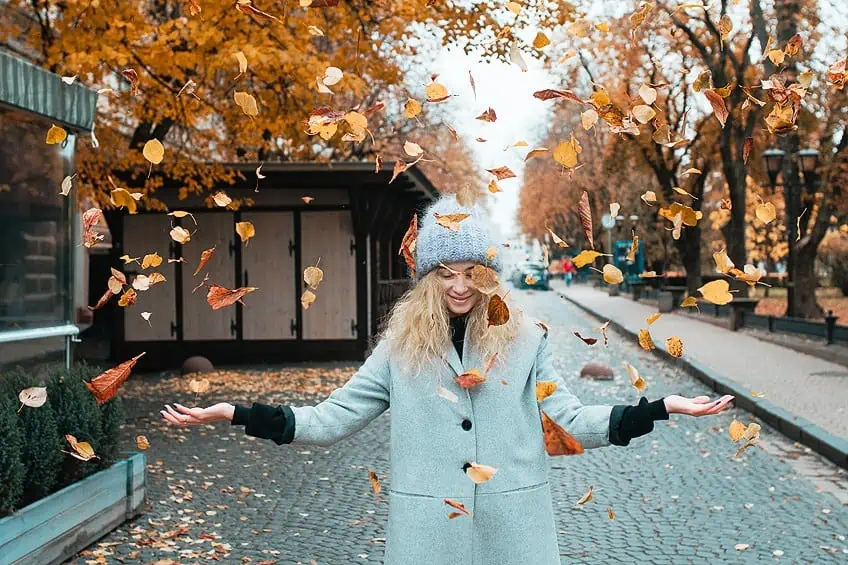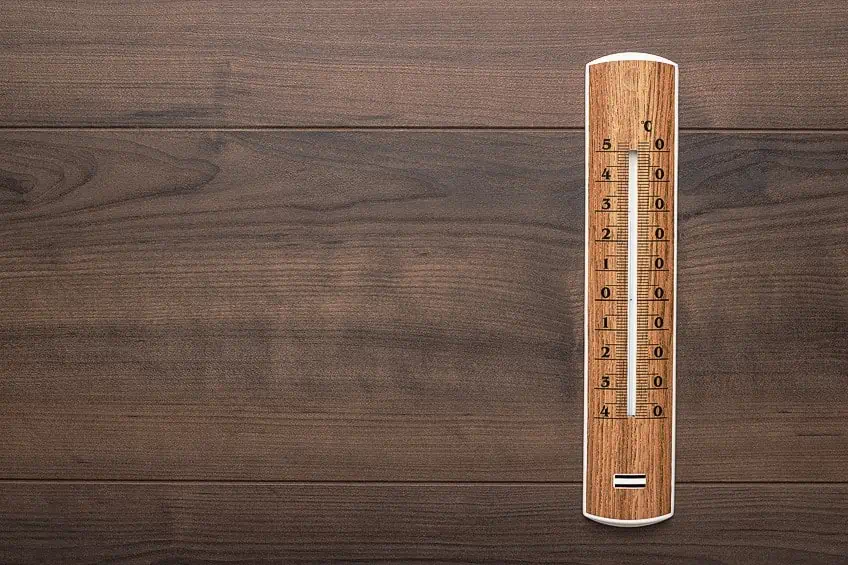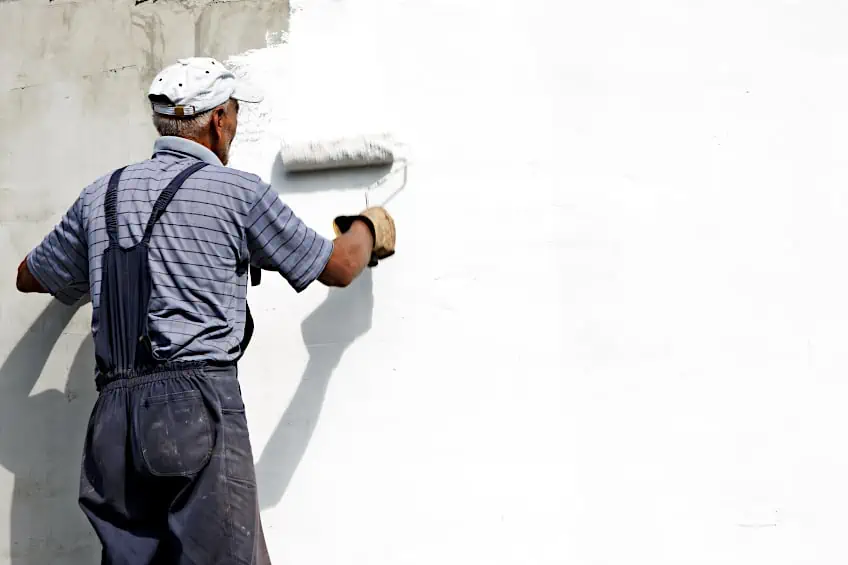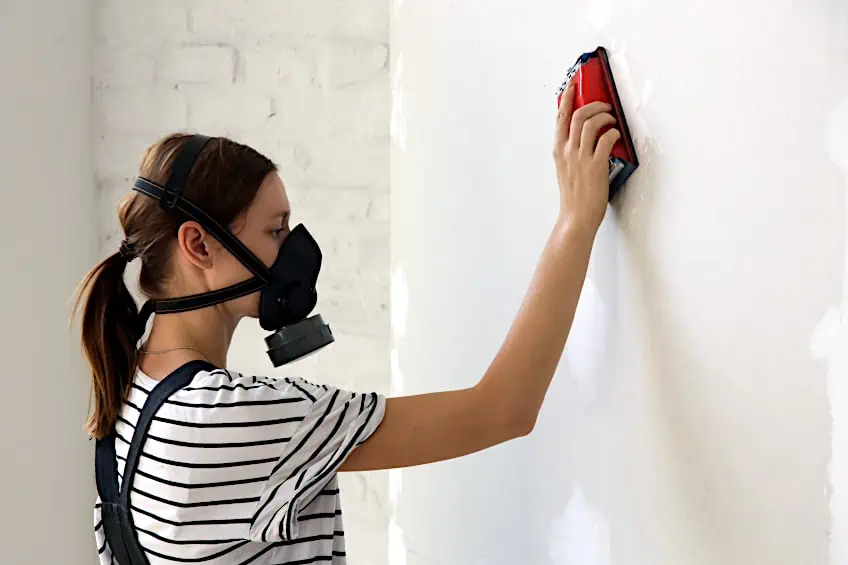Temperature to Paint Outside – Tips on When to Paint Outside
This post may contain affiliate links. We may earn a small commission from purchases made through them, at no additional cost to you. You help to support resin-expert.com
Painting the outside of your home is a monumental task that requires a lot of planning and preparation. This can be made even more stressful if you intend to undertake the task alone, so it is best to ensure that the conditions outside are conducive to you painting your home’s exterior, or any other surface, while outdoors. While you can’t control the weather to get the perfect conditions, there are parameters you can stay within to ensure that your paint adheres and cures correctly when painting outdoors. Below, we’ll have a look at when it’s a good idea to paint outdoors, and what you should consider before committing to the task.
Table of Contents
How Does Temperature Affect Your Paint Outdoors?
Whether you’re painting the walls of your home or something smaller like a garden shed, it’s always best to know when not to paint outside. Temperature can have a profound effect on the finish, adhesion, and curing process of your paint.
This is why we’ve listed a few ways that temperature outdoors can affect your paint so you know how your paint will behave under certain weather conditions.
It Can Affect the Drying Time of Your Paint
One of the biggest ways that temperature can affect your paint when painting outdoors is during the drying and curing process. All paint types have a temperature range in which they are able to dry, degas, and cure, and if this range is exceeded, the paint could fail to dry and cure completely. Why does this happen, you ask?
Paints are made of a number of substances that have been combined to create a surface coating.
This is usually a combination of a base substance, a binder, and a solvent (but not always). In order for paint to dry the solvent needs to evaporate, and if the temperature is too hot or too cold this will not happen, leaving you with wet, awful-looking paint.
Now, keep in mind that this can cause the paint to take really long to dry, or cause the paint to be ruined completely depending on how long your paint has been subjected to the temperature in question. Thankfully, manufacturers will usually indicate the ideal ambient temperature and humidity needed for the paint to dry, cure and harden as intended.
It Can Affect the Consistency of the Paint
Have you ever popped open some paint and realized it looks nothing like it’s supposed to? Perhaps it’s a bit lumpier, or even a bit runnier than you know it should be, which can be demoralizing, to say the least.
While there can be a number of reasons this happens to your paint, the usual suspect is improper storage. Paint needs to be stored in a cool dry place, and if it isn’t, this can be the result.
Just as the consistency of the paint can be affected while inside the container, if the paint is applied to a surface outside of the intended temperature range, it can drastically alter the consistency of your paint. Now you might be thinking, “I’ll just give the paint a good stir and it will be good as new, right?”
Well, not really. Whether your paint has been affected inside the container or after it’s been applied, the paint is pretty much ruined and can take considerable effort to recover. Your paint will also be more challenging to actually apply to your surface, and if it does eventually dry It can greatly diminish the quality and consistency of the finish.
What Adverse Temperature Conditions Are Capable of Doing to Your Paint
It should go without saying that temperature conditions are bad, whether you are painting indoors or outdoors. There are a number of ways that too much heat, too much cold, and too much humidity can affect the manner in which your paint adheres to the surface and the manner in which it eventually cures and dries (if it manages to do so at all).
For one, it can cause your paint to crack. This is true whether your paint has just been applied or if it’s been on your surface for a while.
Extreme heat and cold causes paint to expand and contract respectively. Now, paints are formulated to be flexible, but if the rate of expansion or contraction is too fast, the paint will crack. What happens when paint cracks? It will eventually begin to lift and peel away from the surface, resulting in the surrounding area being covered in little paint flakes. Interesting stuff, right?
While it might be amusing to look at, this means that you’ll have to strip the paint from your surface and go through the application process all over again. This is why it’s important to know when not to paint outside.
What Is the Ideal Temperature for Exterior Painting?
Temperature is a pretty broad term used to describe ambient conditions, and there are a number of other factors you need to consider when checking the temperature for exterior painting. What do you need to consider, you ask? Here are a few things to keep in mind if you’re thinking of painting outdoors in adverse weather conditions.
Ideal Temperature for Oil-Based Paints
Oil-based paints remain one of the most popular and most durable paint types on the market today. Oil-based paints need to be applied in the ideal temperature range because they consist of linseed oil-, solvents, pigment, and binders. For this paint to solidify, the solvent needs to evaporate, and it cannot do this if the temperature is too hot or too cold.
What is the ideal temperature when applying oil-based paint?
Oil-based paints should only be applied within the temperature range of 45° F and 90° F. This should ensure that the paint has just enough heat to dry and cure without causing it to crack or run once it’s been applied to the surface in question. Anything exceeding this temperature range in either direction could ruin your paint.
Ideal Temperature for Latex-Based Paints
Latex-based paints have fast become as popular as oil-based ones, and don’t have as many drawbacks as some of their other more durable counterparts. Latex paints used for exterior surfaces have been specially formulated to ensure that they are able to handle external forces such as heat, cold, impact, abrasion, UV, insect infestation, and mold buildup.
Latex paints don’t usually contain many solvents and are generally low in VOCs (volatile organic chemicals). They still require a specific temperature to dry out and eventually cure though, this temperature range being between 50° and 85° F. As with oil-based paints, anything outside this temperature range may cause the paint to dry slowly or not at all.
Ideal Temperature for Acrylic-Based Paint
For a very long time, oil-based paint was the most widely used paint type due to its versatility and durability. However, these days acrylic paint is considered to be the better option because it contains far fewer VOCs compared to oil-based paints, and it tends to be far more versatile and hard-wearing in some applications.
Like any paint, acrylic paints need to be applied within a specific temperature range.
The acceptable temperature range in which to apply acrylic-based paint happens to be anywhere above 60° F, as this is the temperature range in which the acrylic paint is able to cure and form a film over the surface it has been applied to. Acrylic paint should never be applied in temperatures below 49° F.
When to Paint at Certain Times of the Year
Knowing the best temperature to paint outside means understanding how the seasons affect humidity and what the best temperature to apply paint is in every season. Now, this can vary depending on where you live but there are a few general rules you can follow to ensure that your paint adheres correctly and dries properly.
Temperatures to Paint In During Summer
Summer is arguably the most tempting time to paint exterior surfaces. After all, your paint should dry pretty quickly, and you don’t have to be content with anything aside from the heat. However, if it’s a bit too hot or too humid outdoors this can result in your paint running and not being able to cure at all in certain instances.
What is the ideal temperature range to paint outdoors in the summertime then?
The best temperature range to paint exterior surfaces in the summer is 95° F and below. Heat exceeding this temperature range will cause the paint to run, and even congeal depending on the type of paint you have chosen to go with.
Temperatures to Paint In During Winter
Winter might not be the most opportune time to paint considering all of the rain and snow, but if something needs to be painted, it needs to be painted. Painting in winter can take considerable effort in terms of preparation and timing, but it is possible, as long as you know when the best time to apply your paint is.
When is the best time to paint during winter? While this can vary according to the manufacturer, most painters’ best temperature to apply paint outside during the winter months is when it is above 35° F, which won’t give you a large window of time in some parts of the country. Attempting to apply paint below this temperature will cause it to either fail to cure or possibly freeze entirely.
Temperatures to Paint In During Spring
Spring is the time of the year that many professional painters and DIY enthusiasts will have their hands full with exterior painting. After all, any damage that’s occurred to exterior surfaces over the winter months will need to be repaired, and if you’ve been itching to paint all winter, it’s finally time to scratch said itch. What is the best time to paint during spring though?
The best temperature to paint outside during spring is when it’s at least 50° F.
Wind speed and humidity can vary considerably in the springtime so be sure to check the overall weather conditions aside from the temperature before you begin painting. If you have any doubts, be sure to follow your gut and wait for more stable weather before attempting to paint.
Temperatures to Paint In During Autumn
Autumn can be one of the more awkward times of the year to begin painting. For one, it’s about to get really cold, and since the wind and rain are beginning to pick up it can be quite challenging to pick the right time to paint. If you’re going to paint during the autumn season, we recommend doing so earlier on in the season to get the best results.
What is the best outdoor paint temperature during autumn? Funny enough, it’s at 50° F just like spring. Now, autumn can be a challenging time to paint any surface due to the weather changing so quickly. It’s best to ensure that you stay within the temperature range and that the wind speed humidity is within acceptable margins before you attempt to paint.
How Can You Monitor the Temperature While Painting?
Temperature plays a major part in the painting process. Therefore, it’s a good idea to keep an eye on the temperature not only before you begin painting, but during the painting process too in order to ensure that nothing goes wrong.
This begs the question then; how do you constantly monitor the ambient temperature while you’re painting?
Using a Thermometer
Well, the most low-tech solution is to use the tried-and-true thermometer. A thermometer will allow you to monitor the temperature of your immediate environment in real-time, and if it’s little enough, you can even carry it around with you. Thermometers are laughably inexpensive, so you could simply get one of these and keep it on your person while you’re painting outdoors.
Using a Broadcast Service
The second option is to use the weather services that are broadcast 24/7. These are usually on the radio and on television around the clock, and the cool part of it is that they provide warnings about adverse weather conditions, which is pretty useful.
However, if you don’t want to use a broadcast service (or simply don’t want to listen to chatter all day) there are some other options.
Using an App
These days there is pretty much an app for everything. Therefore, you probably aren’t surprised to hear that there are many weather apps available on smartphones, some of them are even integrated directly into the phone’s operating system. These are usually very accurate and are available for use around the clock for your convenience.
Tips for Painting Outside in Colder Weather
When it comes down to it, and you need to paint in cold weather, you should know how to go about it correctly. Remember that paint responds negatively to cold weather and even more so to cold surfaces, so let’s have a look at what you can do to ensure that things go smoothly if you ever find yourself needing to paint in cold weather.
Check Your Surface Temperature
Surface temperature plays a vital part in any painting process. Why? A surface needs to be at a certain temperature to ensure that the paint adheres to it. If your surface temperature is too cold, it could result in your paint failing to adhere to the surface in question. What is the optimal temperature for the paint to be applied to a given surface?
Any surface needs to be around 35° F to 100° F for the paint to adhere to it well. These are the two extremes, so anything between these two temperatures should be ideal for painting, especially if you are painting outdoors during the winter months. If you are able to slightly heat up the surface somehow, this could help the painting process.
Create an Enclosed Space
If you have to paint during the winter months, why not make sure the experience is a pleasant one? Now, this might not be possible in certain instances, but if it is, create an enclosed space around the workpiece or surface you are attempting to paint.
Not only does this make your painting experience more pleasant, but it allows you a degree of control of the ambient temperature in your immediate environment.
Now, you cannot control outdoor paint temperature completely, but you should be able to moderately increase and decrease the temperature of your surface and the immediate area if you are able to shelter your surface sufficiently. With that being said, if you are able to enclose the area while painting outside, it is well worth the effort.
Prepare Well in Advance
Preparation can save you a lot of time and effort down the line when trying to paint outdoors in the cold. What exactly do we mean by prepare you ask? Well, if you are able to prepare the surface you intend to paint indoors beforehand (cleaning, sanding, and priming) this can greatly improve the chances of your paint adhering and curing if you need to paint it outdoors.
That’s pretty much all you need to know about painting outdoors, no matter what the weather is like. Remember that exercising a little patience and waiting for decent conditions can be a lot better than having to repaint your surface later on because you chose the wrong conditions to paint in. With that being said, remember to check your weather channel and monitor your surface temperature before painting.
Frequently Asked Questions
What Is the Best Weather to Paint Outside?
If you’re wondering what the best weather to paint outside is, it’s pretty simple. Paint is best applied with a surface temperature between 35° F to 100° F to ensure maximum surface adhesion, and to ensure that your paint dries and cures correctly.
How Much Does a Gallon of Paint Cover?
Most of us dive straight for a gallon of paint when we need to paint a large space. However, how much does a gallon of paint cover? A gallon of paint covers (roughly) 400 sq. ft. of space, which is more than enough to paint the average American bedroom.
Is It a Good Idea to Paint Outside?
While painting outside might not always be the best idea, it is often necessary. If you are going to be painting outside during adverse weather conditions, it’s best to ensure that the surface is prepared well in advance, and that the surface you intend to paint is enclosed. Is it a good idea to paint outdoors, then? Yes, but only if you are adequately prepared.


